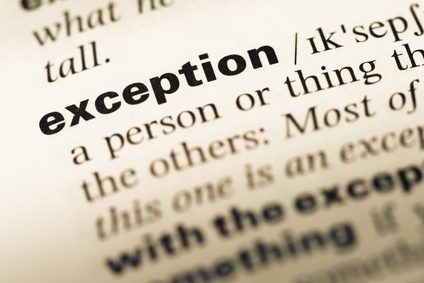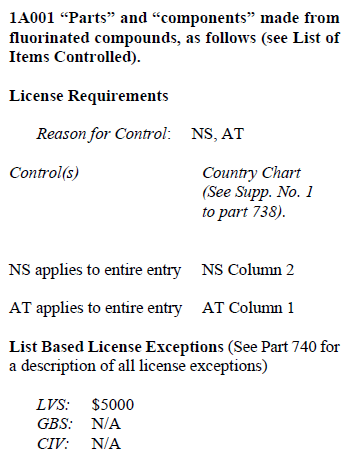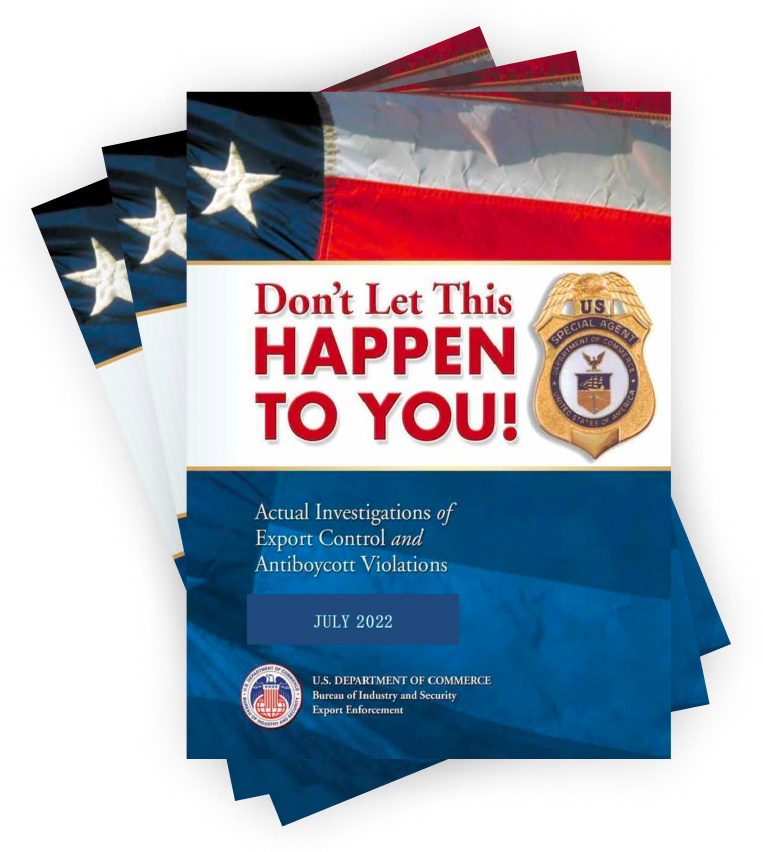The International Trade Blog Export Compliance
A Beginner’s Guide to Export License Exceptions
On: February 22, 2021 | By:  Arnesh Roy |
4 min. read
Arnesh Roy |
4 min. read
 In my previous blog post, I described how to determine if you need an export license by identifying the reasons for control and checking the Commerce Country Chart. In this article I will describe how to determine if there are any export license exceptions available and how to use these exceptions.
In my previous blog post, I described how to determine if you need an export license by identifying the reasons for control and checking the Commerce Country Chart. In this article I will describe how to determine if there are any export license exceptions available and how to use these exceptions.
What Is an Export License Exception?
A license exception is a reason why you may not need an export license for a shipment that would normally require a license. Because there are several reasons you may not need a license, there are several types of license exception.
Each of these is defined by a three-letter abbreviation or acronym. A description of each of the license exception types, as well as information regarding license exceptions more generally, are found in the Code of Federal Regulations 15 CFR Part 740.
 Using a License Exception
Using a License Exception
We will use the same example as in my last blog post: exporting fluorinated parts and components to Algeria. These items are classified with an Export Control Classification Number (ECCN) of 1A001 in the Commerce Control List (CCL). Under the heading, you can see that two license exceptions are listed: LVS and GBS.
(In a previous version of this blog post, I also cited license exception CIV. However, CIV is no longer a valid license exception.)
LVS is for shipments of limited value (740.3). GBS is for shipments to Country Group B countries (740.4).
Under entry 1A001, LVS has a value of $5,000. This means that there is a limit of $5,000 for a single order to be eligible for license exception LVS. This number (in this case $5,000) refers to the net value of the items in a single order.
Orders that have a value above the specific limit may not be split in order to meet the applicable LVS dollar limit. However, orders that meet all the LVS eligibility requirements, including the applicable LVS dollar limit, may be split among two or more shipments.
The total value of exports per calendar year to the same ultimate or intermediate consignee of items classified under a single ECCN may not exceed 12 times the LVS value limit for that ECCN.
Under ECCN 1A001, GBS is marked as “N/A” which stands for “Not Applicable.” This means that license exception GBS is not available for orders under heading 1A001.
When filing through the Automated Export System (AES), you will have to enter the license exception code you are using. The Shipping Solutions export software allows you to do this by using the same information you enter for your export documents, saving time and making your documentation and compliance process more accurate by eliminating redundant data entry.
It is important to read all of the information listed under the heading. For our example using ECCN 1A001, we can see that if the items are “specially designed” or modified for missiles or for items on the U.S. Munitions List (USML), then these items are subject to the International Traffic in Arms Regulations (ITAR) rather than the Export Administration Regulations (EAR).
Other Export License Exceptions
LVS and GBS are the most common license exceptions, but you may come across others such as STA (Strategic Trade Authorization), TSR (Technology and Software Under Restriction), APP (Computers) and ENC (Encryption Commodities, Software, and Technology.) Some, such as TSR, will usually say either “Yes” or “N/A” next to the license exception acronym listed under a heading for a particular type of product.
Sometimes it will include a condition. For example, it may say something like “Yes, except unavailable for MT,” which would mean that this license exception is unavailable when you require an export license for reason MT (Missile Tech). Another example would be under ECCN 3A001 where it says “CIV: Yes for 3A001.a.3, a.7, and a.11,” which means that this license exception specifically applies only to those subheadings.
Others, for example STA, will often have special conditions that require you to reference certain parts of the EAR in order to determine if you can use the license exception. How each license exception works may be slightly different depending on which heading you are looking at, so make sure that you are reading the information provided under each relevant heading on the CCL in order to determine if a license exception is available, and if so, what kind of license exception and what conditions must be met in order to be able to use the license exception.
For a list of all the export license exception codes and what they mean, see our article, What You Need to Know about Export License Exceptions.
My introduction to export regulations and the export license determination process began when I attended the Complying with U.S. Export Controls seminar sponsored by the Bureau of Industry and Security (BIS) and the Minnesota Trade Office. I would highly recommend the seminar to everyone regularly involved in exporting. You'll find the latest seminar schedule on the BIS website.
This article was first published in September 2016 and has been updated to include current information, links and formatting.

About the Author: Arnesh Roy
Arnesh Roy was a Senior Inside Sales Representative at Shipping Solutions.



